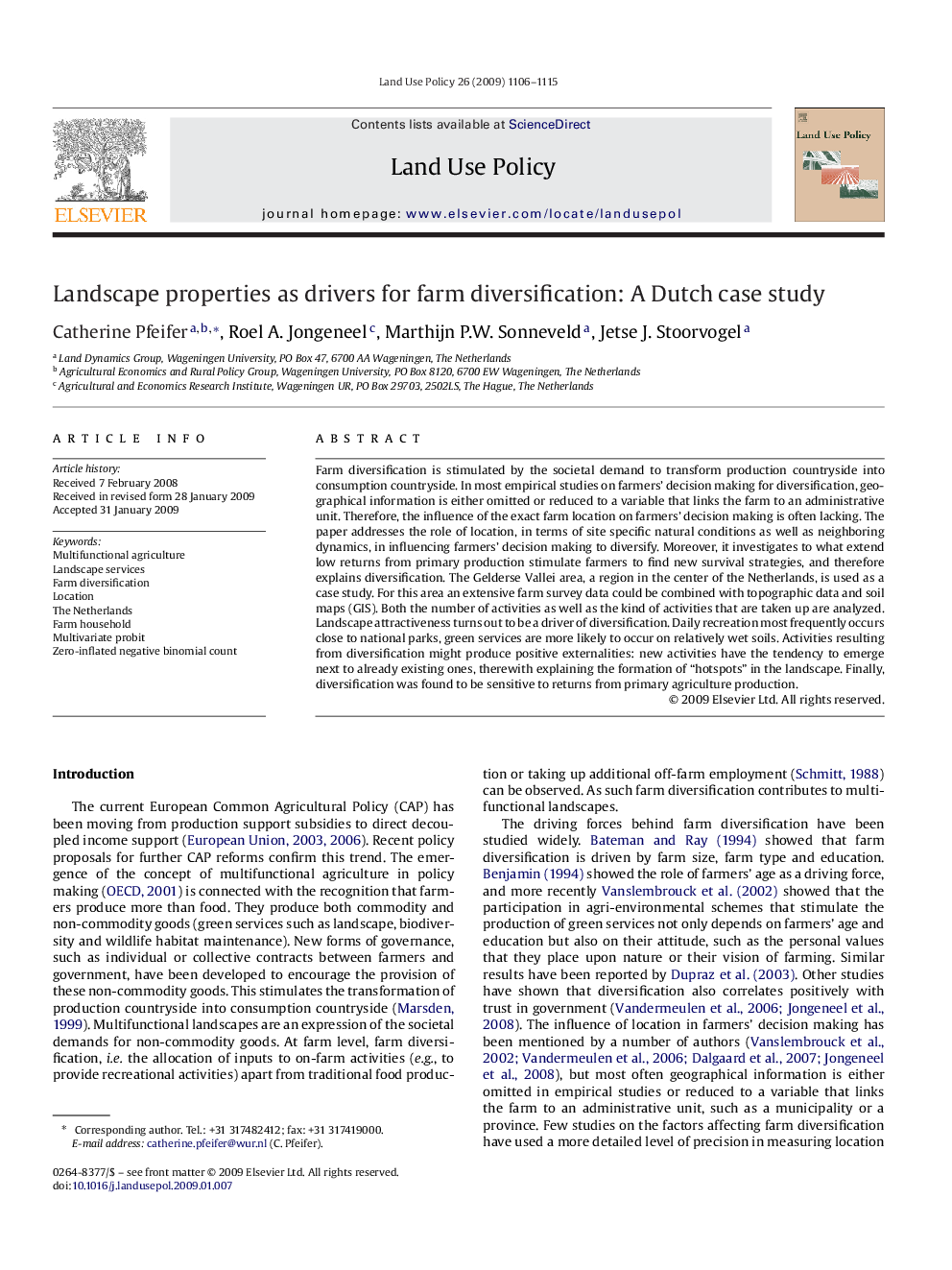| Article ID | Journal | Published Year | Pages | File Type |
|---|---|---|---|---|
| 93644 | Land Use Policy | 2009 | 10 Pages |
Farm diversification is stimulated by the societal demand to transform production countryside into consumption countryside. In most empirical studies on farmers’ decision making for diversification, geographical information is either omitted or reduced to a variable that links the farm to an administrative unit. Therefore, the influence of the exact farm location on farmers’ decision making is often lacking. The paper addresses the role of location, in terms of site specific natural conditions as well as neighboring dynamics, in influencing farmers’ decision making to diversify. Moreover, it investigates to what extend low returns from primary production stimulate farmers to find new survival strategies, and therefore explains diversification. The Gelderse Vallei area, a region in the center of the Netherlands, is used as a case study. For this area an extensive farm survey data could be combined with topographic data and soil maps (GIS). Both the number of activities as well as the kind of activities that are taken up are analyzed. Landscape attractiveness turns out to be a driver of diversification. Daily recreation most frequently occurs close to national parks, green services are more likely to occur on relatively wet soils. Activities resulting from diversification might produce positive externalities: new activities have the tendency to emerge next to already existing ones, therewith explaining the formation of “hotspots” in the landscape. Finally, diversification was found to be sensitive to returns from primary agriculture production.
